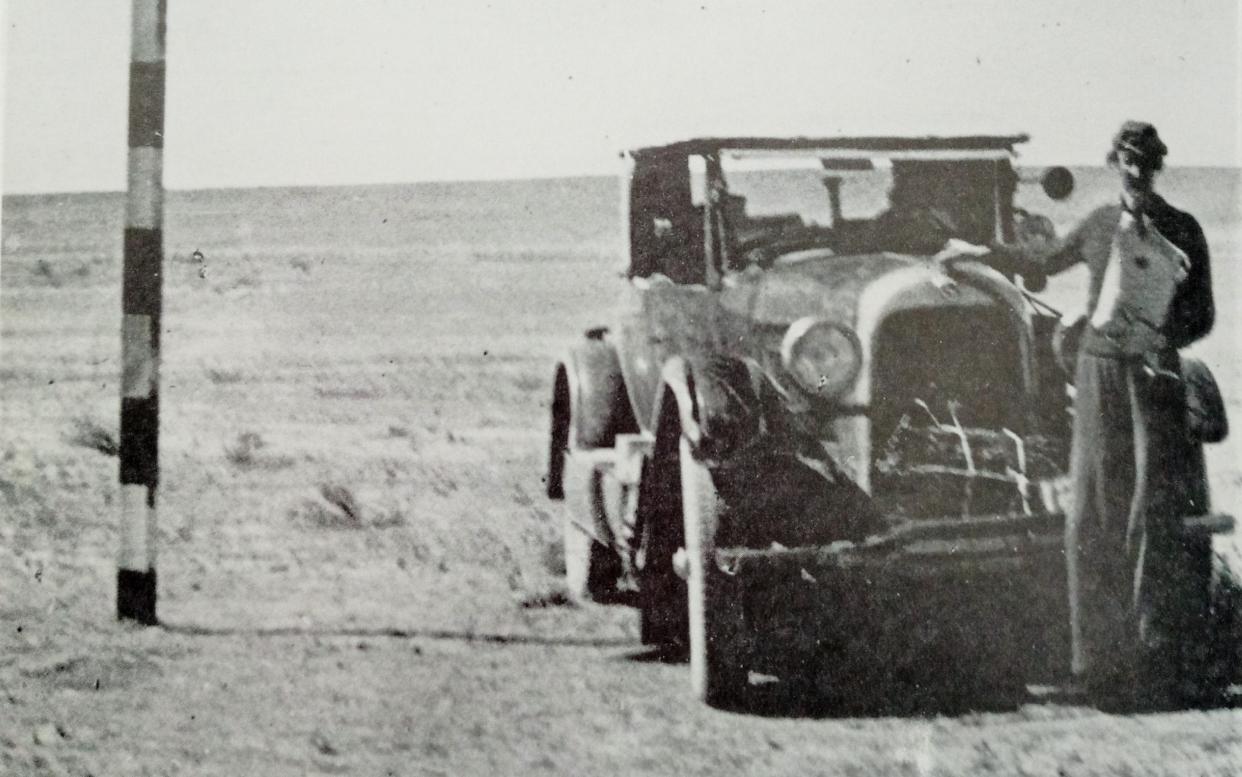What we can learn from the trend-setting engineer who rebelled against society's limits for women

It was a wild, snowy drive through the Bosnian forests; howling wolves stalked the two women whose 1930 Ford A model was running dangerously low on fuel. The wiper had broken and, smoking furiously, the heiress Dolly Rodewald hung out of the window to scoop piles of snow from the windscreen while her English chauffeur, Claudia Parsons, tried to keep the car on the rutted road. Eventually, the pair arrived at the Europa Hotel, Sarajevo, just before midnight as the Ford drank its last drop of petrol.
While in the Twenties and Thirties, American heiresses made a habit of embarking on hair-raising treks across Europe it was more unusual for their chauffeur to be a woman – let alone one holding a diploma in engineering from Loughborough (then College). Since qualifying in 1922, Parsons had taken a string of chauffeuring jobs; experience that eventually, in 1938, would prompt her to circumnavigate the world, a dream she had cherished since she was a small girl growing up in Guildford.
What circumstances had prompted this pronouncedly left-handed, rather clumsy young woman to break pretty much every social code going, codes that firmly kept young women chained to the home, the only excitement normally available to them held within the pages of romantic novels?
Parsons was born in 1900 in India but, while still a baby, was sent with her sister to live with her strict Aunt Muriel in Guildford where she endured an unhappy and repressed childhood. The clocks ticked slowly through the endless hours. Punishments for “naughty” behaviour were random but frequent. Once she had to spend an evening laboriously copying out the line “I must not watch the puddings coming in” a hundred times. Small moments of joy for the young Claudia came when her tyrannical aunt left the house and, using plasticine and copper piping from the lavatory cistern, she constructed Heath Robinson-esque water gardens and fountains. She asked for a carpentry set for her seventh birthday and, by the age of nine, she had worked out how to fix bicycle tyre punctures and broken chains.
All this while Edwardian England was mostly still content to lock up its daughters and considered any young girl who deviated from the correct role of demure young lady, for whom physical exertion was limited to playing tennis and stretching an octave on the piano, to be dangerously radical.

But Claudia was different, and in 1920 was one of only two women enrolled in the engineering diploma at Loughborough College. Quite apart from having to wear shapeless oily overalls it was tough being an embattled outsider; boarding house landladies were suspicious of her and, among the entire cohort of more than 100 students, Claudia and the other female student Dorothea Travers were the only two accused of cheating in their automobile engineering exams in May 1921. She narrowly avoided being thrown out. The suspicion continued and even though Parsons eventually gained her diploma in 1922, motor mechanic workshops were, strangely, always fully staffed when she applied for jobs even though in the early 1920s car ownership was rising sharply.
Despite the huge gains made by women in the so-called “STEM” subjects, of science, technology, engineering and maths – and the win, this month, of the first-ever two-woman team for the Nobel Prize for Chemistry – women still lag a long way behind men breaking into the sciences. In November, the Women in STEM conference will focus on how to get more women through the career pipeline and into top jobs in the still very male-dominated areas of motor and construction engineering.
Elizabeth Donnelly, CEO of the Women’s Engineering Society (WES), will tell the conference that women apprentices still have to prove themselves much more than young men and that “unconscious bias” means that women make up only just over 10 per cent of the engineering workforce, one of the lowest rates in Europe.
“Women engineers have proved themselves heroes through the Coronavirus crisis, and are on teams behind the Nightingale hospitals and the development of quick turnaround ventilators, as well as leading disaster response teams helping to rebuild roads and bridges destroyed by flooding,” she says. “Women engineers are finding solutions to climate change and pandemic and we must find ways of encouraging them to study engineering and, once qualified, stay in the profession.”

The WES was founded 101 years ago and, appropriately, one of the first things Claudia Parsons did on enrolling at Loughborough, was to found the WES Midlands branch. In 1939 she thrilled members when she lectured about her astonishing round-the-world voyage, which involved her driving across the United States, travelling by train through Japan and the Far East and finally completing the last 10,000 miles from Calcutta to Calais in a 1925 Studebaker motor car with the anthropologist Kilton Stewart.
Wherever she went unaccompanied, men tried to escort her, or buy first class carriage tickets to avoid her being seen by third class passengers. Despite this, her global circumnavigation was the most liberating, and defining experience of her life. Parsons lived to be 98, never married and went on to distinguish herself as a munitions factory inspector during the Second World War.
Rebel Women Between the Wars by Sarah Lonsdale (RRP £20). Buy now for £16.99 at books.telegraph.co.uk or call 0844 871 1514


